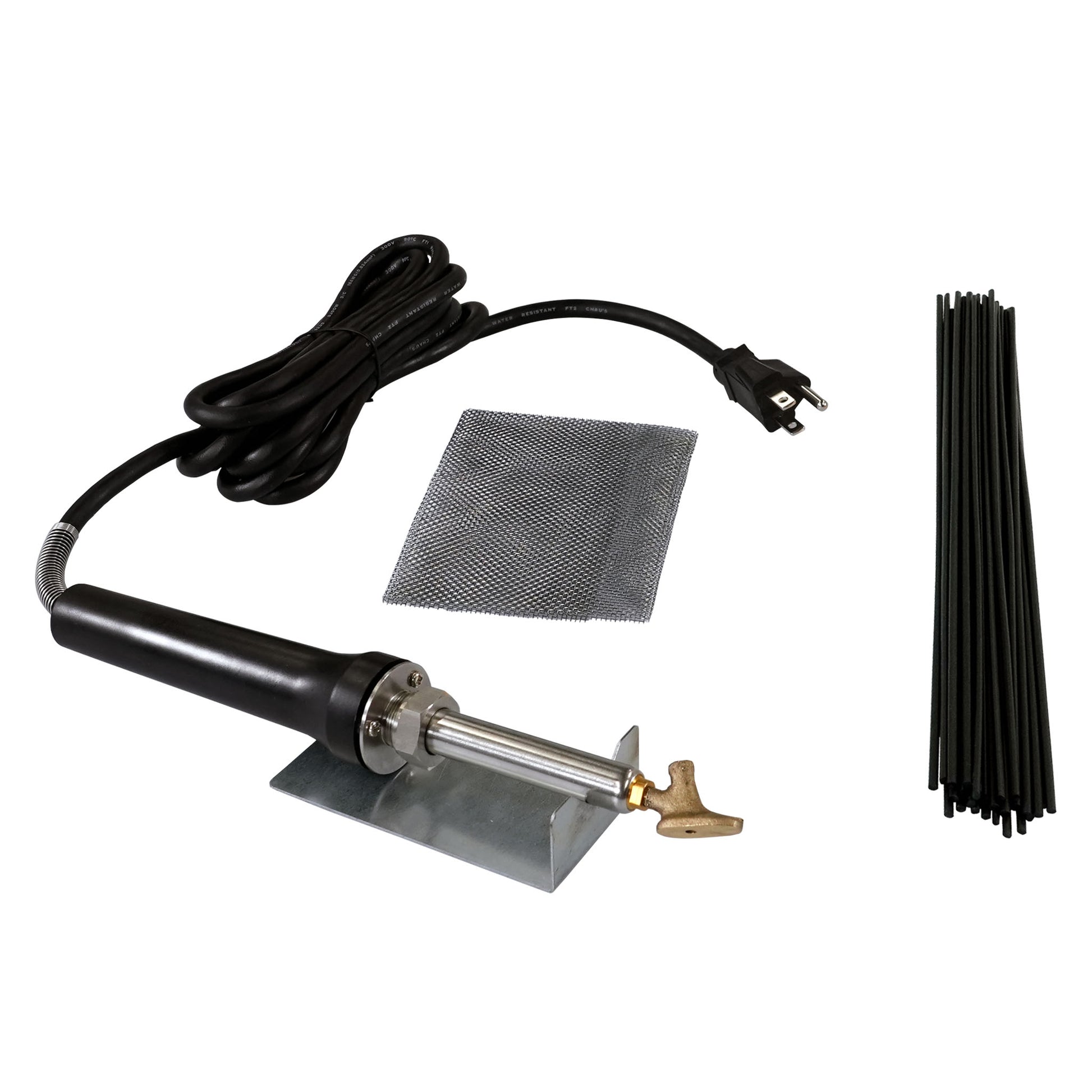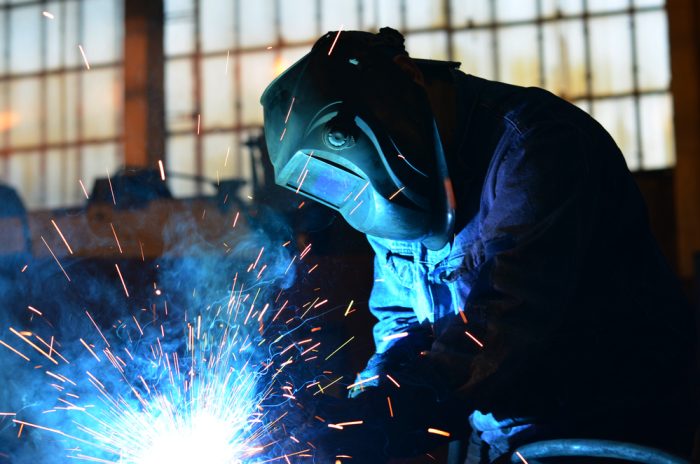Usual Welding Repair Issues and How to Address Them Effectively
Welding fixings typically experience a variety of concerns that can threaten the integrity of the final item. Common problems include insufficient penetration, porosity, and imbalance, among others. Each issue offers special obstacles that need particular strategies for resolution. Comprehending these concerns is important for welders intending to improve their abilities and end results. This discussion will certainly discover these usual welding fixing issues and effective techniques to address them.
Inadequate Penetration
Poor infiltration happens when the weld metal stops working to totally fuse with the base product, causing weak joints and potential structural failings. This concern usually comes from inadequate heat input, incorrect electrode angle, or inappropriate welding rate. Welders might come across poor penetration as a result of a miscalculation of the required specifications for a particular product density or kind. Additionally, contamination on the base product's surface can hinder effective bonding, aggravating the trouble. To resolve poor penetration, welders ought to assure ideal setups on their devices and keep a tidy job surface. Regular evaluation of welds is recommended to identify any shortages early, enabling prompt corrections and the prevention of jeopardized structural honesty in bonded assemblies.
Porosity
Porosity is an usual flaw in welded joints that manifests as little gas bubbles entraped within the weld metal. This defect can jeopardize the honesty of the weld, resulting in lowered stamina and possible failing under stress and anxiety. Welding. Porosity usually occurs from contamination, dampness, or improper welding strategies, which permit gases to get away into the molten weld pool. To deal with porosity, welders ought to assure proper surface preparation, preserve a clean working environment, and make use of ideal welding parameters. Furthermore, choosing the appropriate filler product and securing gas can alleviate gas entrapment. Normal inspection and testing of welds can aid recognize porosity early, ensuring timely rehabilitative actions are taken, consequently maintaining the high quality and dependability of the bonded framework
Imbalance
Misalignment in welding can arise from different elements, including inappropriate setup and thermal growth. Comprehending the root triggers is crucial for efficient resolution. Numerous modification methods are readily available to straighten components and ensure architectural integrity.
Reasons for Misalignment
Welding misalignment typically originates from a selection of underlying concerns that can jeopardize architectural integrity. One key cause is improper fit-up of components prior to welding, which can result in gaps and uneven surface areas. Variants in thermal expansion during the welding process can also cause distortion, specifically if the products being signed up with have different coefficients of growth. In addition, poor securing and fixturing may fall short to hold elements safely in location, resulting in motion throughout welding. Poorly conserved devices, consisting of welding machines and devices, may present disparities in the weld grain, additional adding to misalignment. Operator mistake, stemming from insufficient training or experience, can also play a substantial duty in developing misaligned welds.

Adjustment Methods Offered
Attending to imbalance effectively calls for a combination of rehabilitative strategies customized to the particular issues available. One usual approach is the usage of jigs or fixtures to hold parts in the correct position during welding, making sure regular placement. In addition, pre-heating the products can help in reducing distortion and boost fit-up. For significant misalignment, mechanical adjustment methods, such as utilizing hydraulic jacks or clamps, can be used to remedy the placement before welding. Post-weld warmth treatment may additionally be needed to alleviate stresses triggered by imbalance. Ultimately, mindful evaluation and modification throughout the configuration phase can prevent imbalance issues from coming to be substantial problems, advertising a smoother welding process and improving general structural stability.
Distortion
Distortion is a typical difficulty in welding that can arise from various variables, including uneven cooling and heating. Recognizing the root causes of distortion is vital for implementing reliable prevention methods. Addressing this issue not only improves structural honesty yet likewise enhances the overall top quality of the weld.
Sources of Distortion
When based on the intense warm of welding, products usually go through adjustments that can cause distortion. This phenomenon mainly emerges from thermal growth and contraction throughout the welding process. As the weld location heats up, the material expands; upon cooling, it contracts, which can produce internal tensions. On top of that, irregular heating across a work surface can worsen these tensions, causing warping or bending. The type of material likewise plays a substantial duty; steels with varying thermal conductivity and coefficients of development might respond in a different way, causing unpredictable distortions. Furthermore, bad joint design and insufficient fixturing can add to imbalance throughout welding, increasing the possibility of distortion. Recognizing these causes is necessary for go to the website efficient welding fixing and prevention approaches.
Prevention Techniques
Effective avoidance methods for distortion during welding concentrate on managing warmth input and ensuring correct joint design. Preserving a regular heat input assists to minimize thermal development and contraction, which can cause distortion. Using techniques such as pre-heating the work surface can additionally lower the temperature slope, promoting consistent heating. Furthermore, choosing ideal joint designs, such as T-joints or lap joints, can improve security and lower anxiety focus. Executing proper fixturing to protect the workpieces in position further aids in maintaining placement throughout the welding procedure. Staggered welding sequences can distribute warmth extra evenly, stopping local distortion. By applying these methods, welders can substantially decrease the probability of distortion and improve the overall top quality of their welds.
Cracking
Splitting is a common concern encountered in welding repair work, commonly arising from different factors such as incorrect cooling prices, product option, or inadequate joint prep work. The incident of fractures can greatly compromise the integrity of the weld, bring about possible failings throughout operation. To resolve this issue, welders have to initially analyze the origin, making certain website link that products work and suitably picked for the particular application. Additionally, managing the air conditioning price during the welding procedure is crucial; fast air conditioning can cause anxiety and lead to breaking. Correct joint style and preparation likewise add to decreasing the threat. Carrying out these strategies can improve weld quality and durability, inevitably minimizing the probability of fracturing in completed weldments.

Insufficient Fusion
A significant issue in welding repair services is incomplete blend, which takes place when the weld steel does not appropriately bond with the base product or previous weld passes - Belgrade. This defect can bring about weak points in the joint, possibly compromising the integrity of the bonded framework. Aspects adding to incomplete fusion include inadequate heat input, incorrect welding technique, and contamination of the surfaces being joined. To resolve this problem properly, welders ought to ensure appropriate pre-weld cleaning and surface preparation, as well as adjust their welding parameters to attain sufficient infiltration and combination. Routine evaluation throughout the welding procedure can additionally aid recognize insufficient blend early, enabling timely corrective procedures to improve the overall top quality of the weld
Overheating
While welding repair services can improve structural integrity, overheating provides a considerable challenge that can lead to material degradation. Extreme warm during welding can alter the mechanical residential or commercial properties of steels, leading to minimized stamina, increased brittleness, and bending. This sensation is particularly crucial in high-stress applications where architectural reliability is vital. Recognizing overheating can involve visual inspections for discoloration or distortion, Resources along with checking temperature level throughout the welding procedure. To reduce the dangers associated with overheating, welders must use appropriate methods, such as managing heat input, adjusting traveling speed, and utilizing suitable filler materials. In addition, implementing pre- and post-weld heat therapies can help recover product residential properties and improve the general high quality of the repair work, making certain lasting performance and security.
Regularly Asked Questions
What Are the Usual Indicators of a Welding Flaw?

How Can I Test My Welds for Quality?
To test welds for top quality, one can use visual inspections, ultrasonic testing, and radiographic techniques. Each technique guarantees structural integrity, recognizes problems, and confirms adherence to specified requirements, inevitably enhancing the reliability of the bonded joints.
What Safety and security Safety Measures Should I Take While Welding?
When welding, one ought to prioritize safety and security by using ideal individual protective equipment, making sure correct ventilation, protecting combustible products away, keeping a clean work space, and being conscious of environments to stop injuries and crashes.
Can I Repair a Weld Without Remodeling the Entire Joint?
Fixing a weld without renovating the entire joint is feasible, relying on the damage (Montana Mobile Welding and Repair Belgrade). Methods such as grinding, adding filler product, or utilizing a welding procedure can properly resolve specific imperfections while maintaining the surrounding structure
What Tools Are Essential for Reliable Welding Services?
Vital tools for reliable welding repair work include a welding maker, cord brush, grinder, safety equipment, clamps, and filler products. Each tool plays a vital role in guaranteeing high quality and safety during the repair process. Porosity typically occurs from contamination, moisture, or inappropriate welding strategies, which allow gases to escape right into the molten weld pool. Inadequately kept devices, consisting of welding machines and devices, might introduce variances in the weld grain, additional adding to misalignment. When subjected to the extreme warmth of welding, materials typically undergo changes that can lead to distortion. Cracking is a typical issue encountered in welding repair work, typically resulting from numerous elements such as improper air conditioning rates, product choice, or inadequate joint prep work. A significant problem in welding repair work is insufficient blend, which occurs when the weld steel does not properly bond with the base material or previous weld passes.
Comments on “Field-tested steps to avoid porosity in welds with Belgrade Welding”